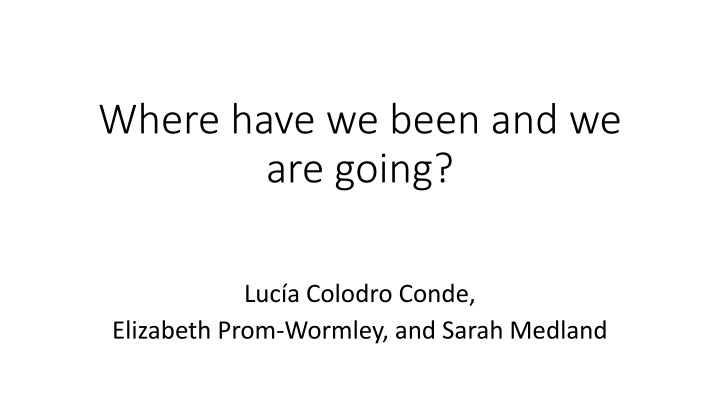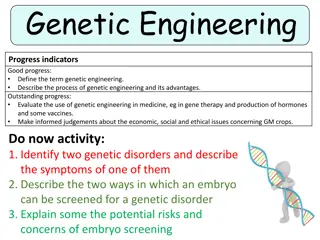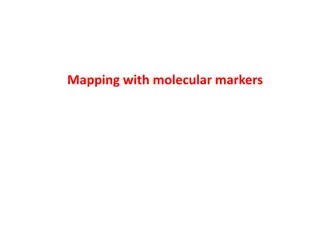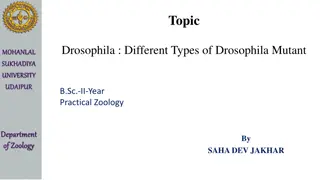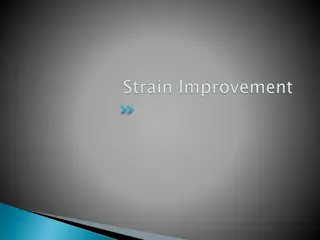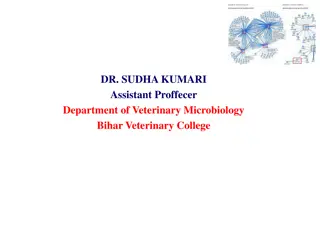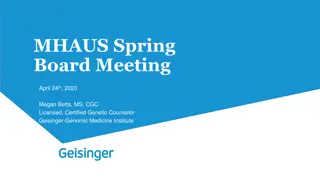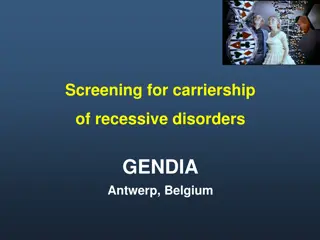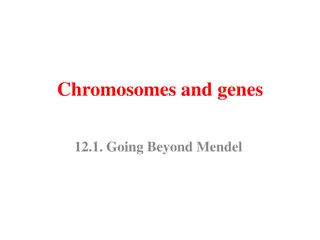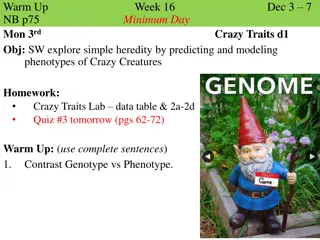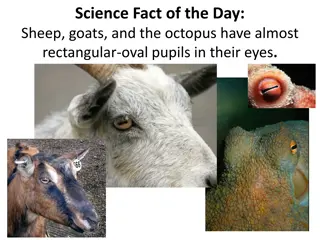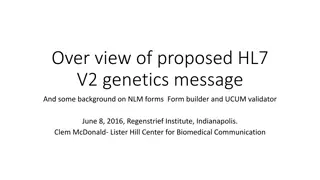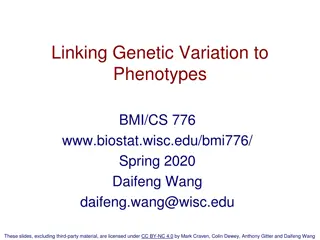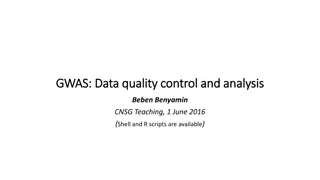Modeling Genetic and Environmental Effects on Phenotypes
Using Structural Equation Modeling (SEM) techniques to study the genetic and environmental influences on phenotypes. This presentation explores processes like specification, identification, estimation, and evaluation. Various aspects such as variance components estimation, path coefficients, and path tracing are discussed, providing insights into understanding complex relationships in genetics.
Download Presentation

Please find below an Image/Link to download the presentation.
The content on the website is provided AS IS for your information and personal use only. It may not be sold, licensed, or shared on other websites without obtaining consent from the author.If you encounter any issues during the download, it is possible that the publisher has removed the file from their server.
You are allowed to download the files provided on this website for personal or commercial use, subject to the condition that they are used lawfully. All files are the property of their respective owners.
The content on the website is provided AS IS for your information and personal use only. It may not be sold, licensed, or shared on other websites without obtaining consent from the author.
E N D
Presentation Transcript
Where have we been and we are going? Luc a Colodro Conde, Elizabeth Prom-Wormley, and Sarah Medland
Using SEM to model genetic and environmental effects on phenotypes https://www.colorado.edu/ibg/international- workshop/2020-international-statistical-genetics- workshop/workshop-2020-preliminary
In summary, we have been doing processes of: Specification Identification Estimation Evaluation
Estimation of variance components Estimation of path coefficients MZ MZ DZ DZ
Code in estimation of path coefficients pathA <- mxMatrix( type="Lower", nrow=nv, ncol=nv, free=TRUE, values=svPa, label="a11", lbound=lbPa, name="a" ) pathC <- mxMatrix( type="Lower", nrow=nv, ncol=nv, free=TRUE, values=svPa, label="c11", lbound=lbPa, name="c" ) pathE <- mxMatrix( type="Lower", nrow=nv, ncol=nv, free=TRUE, values=svPe, label="e11", lbound=lbPa, name="e" ) # Create Algebra for Variance Components covA <- mxAlgebra( expression=a %*% t(a), name="A" ) covC <- mxAlgebra( expression=c %*% t(c), name="C" ) covE <- mxAlgebra( expression=e %*% t(e), name="E" ) # Create Algebra for expected Variance/Covariance Matrices in MZ & DZ twins covP <- mxAlgebra( expression= A+C+E, name="V" ) covMZ <- mxAlgebra( expression= A+C, name="cMZ" ) covDZ <- mxAlgebra( expression= 0.5%x%A+ C, name="cDZ" ) expCovMZ <- mxAlgebra( expression= rbind( cbind(V, cMZ), cbind(t(cMZ), V)), name="expCovMZ" ) 26 expCovDZ <- mxAlgebra( expression= rbind( cbind(V, cDZ), cbind(t(cDZ), V)), name="expCovDZ" )
Code in estimation of variance components ## Create Matrices for Variance Components covA <- mxMatrix( type="Symm", nrow=nv, ncol=nv, free=TRUE, values=valDiag(svPa,nv), label=labLower("VA",nv), name="VA" ) covC <- mxMatrix( type="Symm", nrow=nv, ncol=nv, free=TRUE, values=valDiag(svPa,nv), label=labLower("VC",nv), name="VC" ) covE <- mxMatrix( type="Symm", nrow=nv, ncol=nv, free=TRUE, values=valDiag(svPa,nv), label=labLower("VE",nv), name="VE" ) ## Create Algebra for expected Variance/Covariance Matrices in MZ & DZ twins covP <- mxAlgebra( expression= VA+VC+VE, name="V" ) covMZ <- mxAlgebra( expression= VA+VC, name="cMZ" ) covDZ <- mxAlgebra( expression= 0.5%x%VA+ VC, name="cDZ" ) expCovMZ <- mxAlgebra( expression= rbind( cbind(V, cMZ), cbind(t(cMZ), V)), name="expCovMZ" ) expCovDZ <- mxAlgebra( expression= rbind( cbind(V, cDZ), cbind(t(cDZ), V)), name="expCovDZ" ) 31
Path Path: Implicit (artificial) boundary constraint - Estimate a but a2 can never be negative. - As the number of variables in a twin model increases, the number of implicit boundaries in the model increase. Variance Component Variance Component: Unbounded - Estimates VA, VC, and VE can be positive and negative
Why do we prefer the variance component approach? The statistical significance of the parameters from a univariate ACE model is often assessed using a likelihood ratio test. Under certain regularity conditions this statistic is asymptotically distributed as 2 with 1 d.f. BUT these regularity conditions are not met when models have either implicit or explicit bounds. When boundaries are included, the numerical Type I error rates are lower than theoretically expected. - The null hypotheses that either a2= 0 or c2 = 0 are rejected less frequently than would be expected due to chance. - This, causes an increase in Type II errors, where we can falsely conclude the variance component is not significant.
Why do we prefer the variance component approach? It may fit better - No bias from implicit boundary Negative variances? Model wrong?
BMI Twin Correlations A = 2(rMZ-rDZ) C = 2rDZ - rMZ E = 1- rMZ ADE or ACE? 0.78 0.30 36
